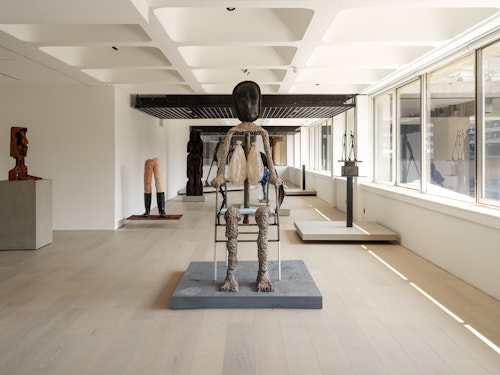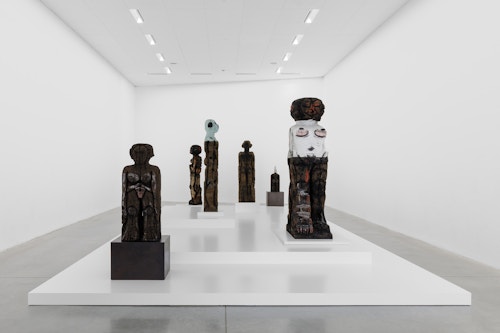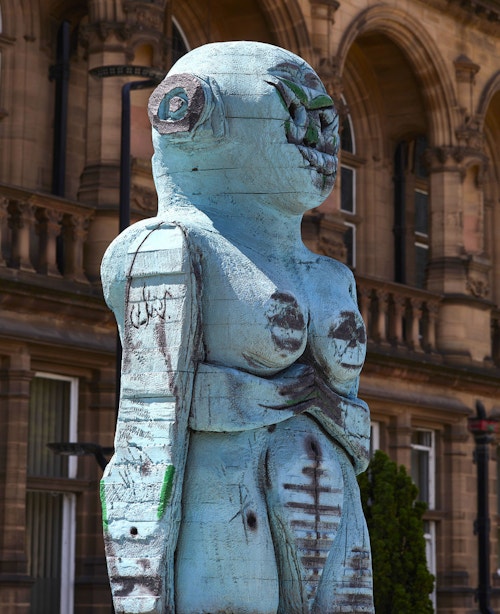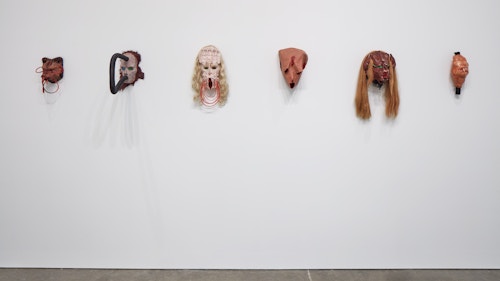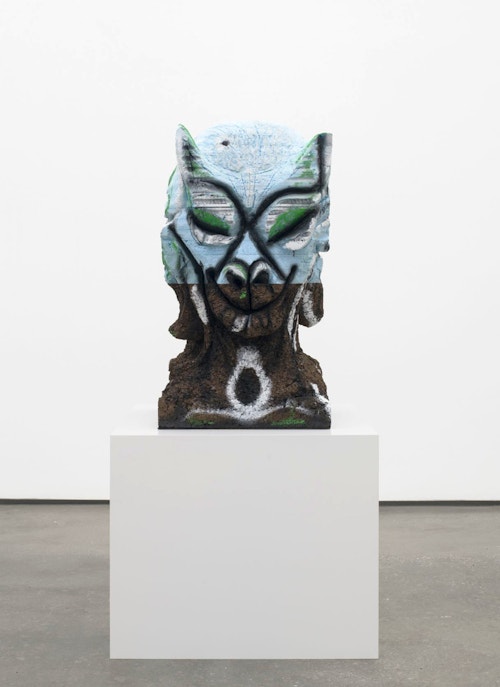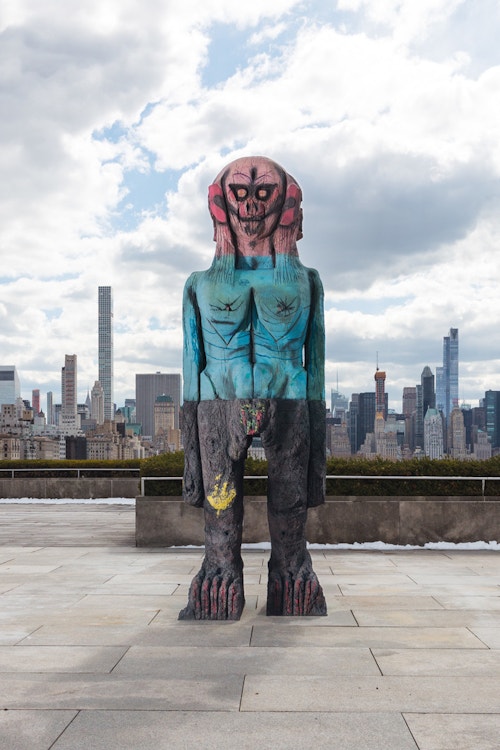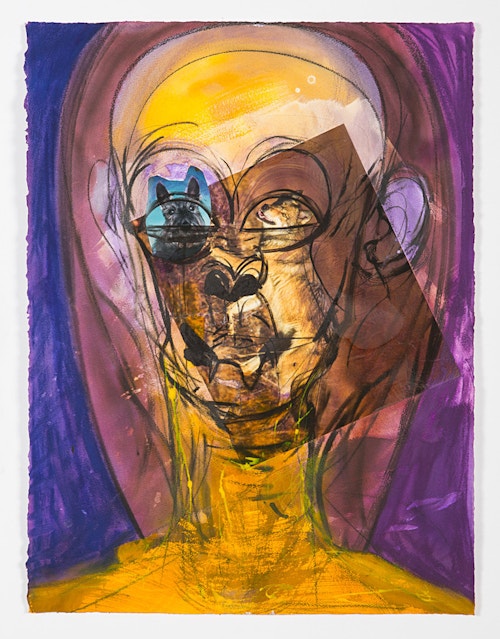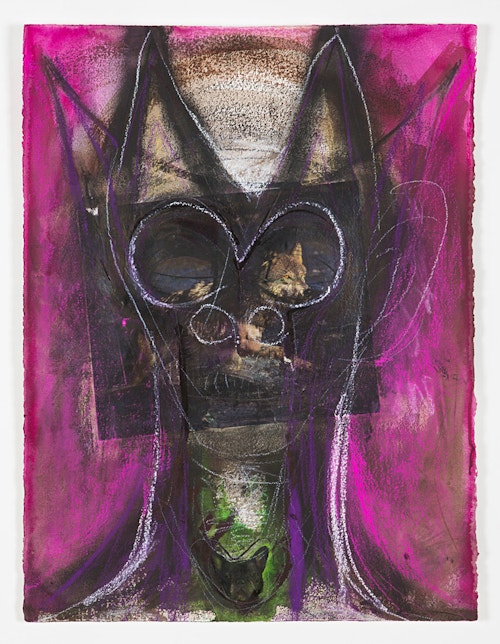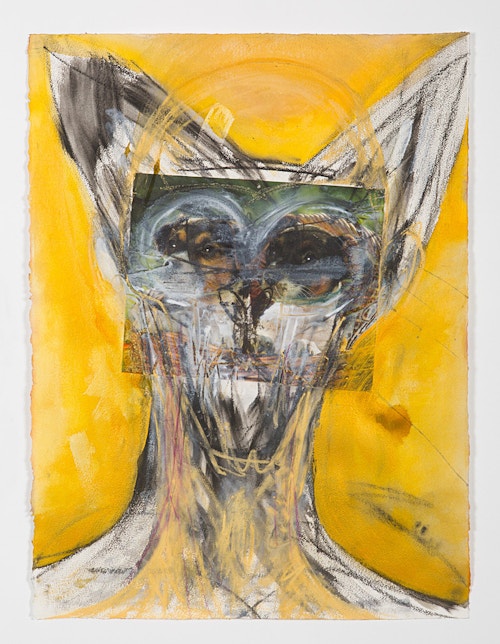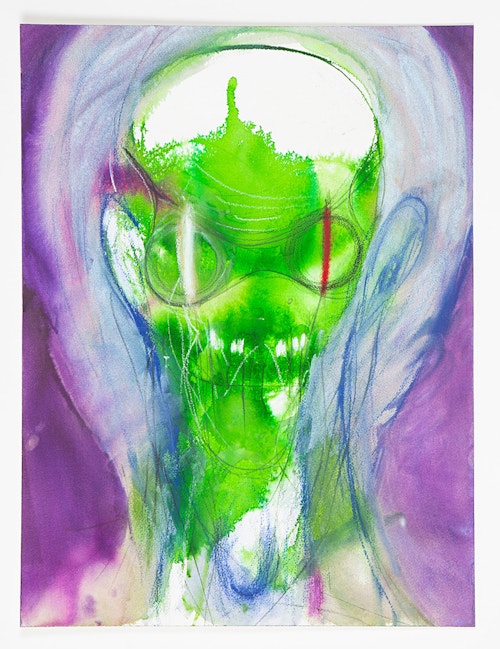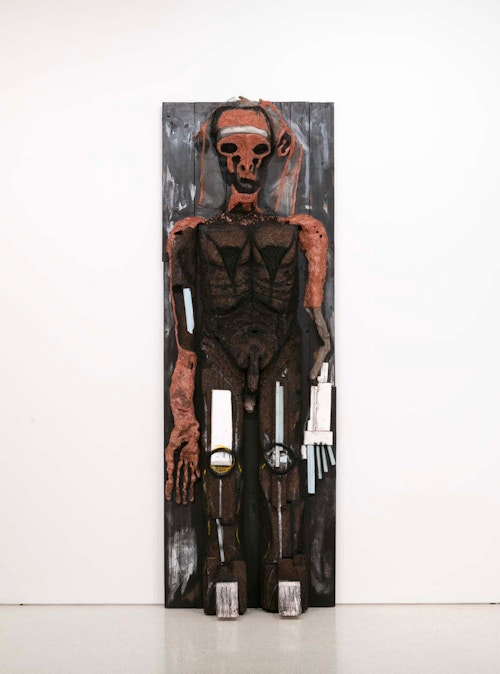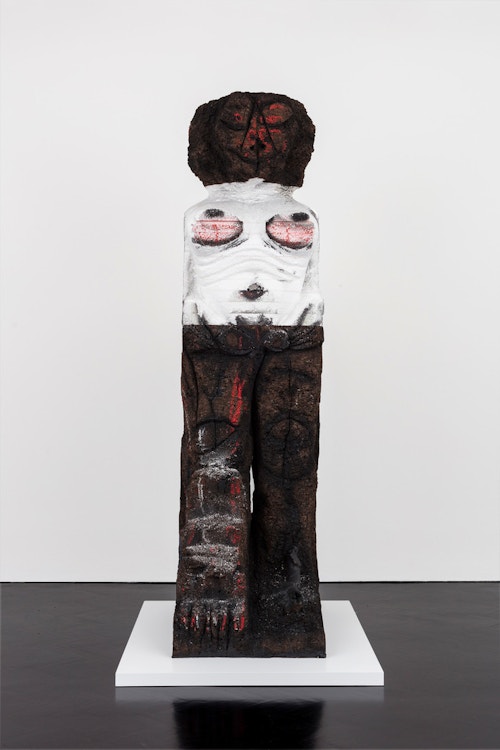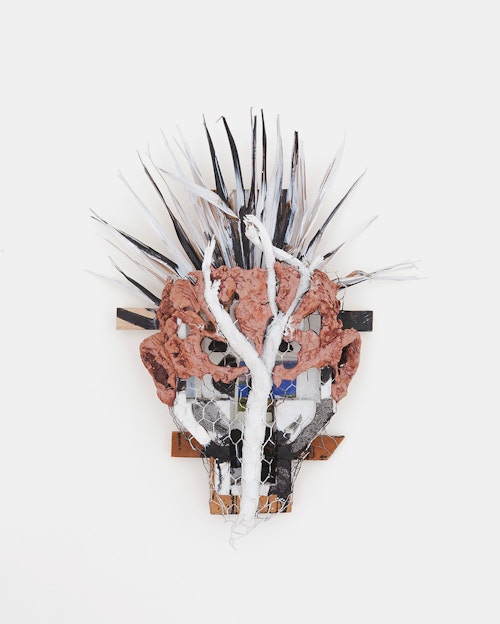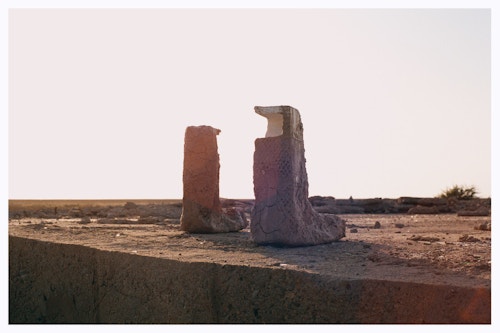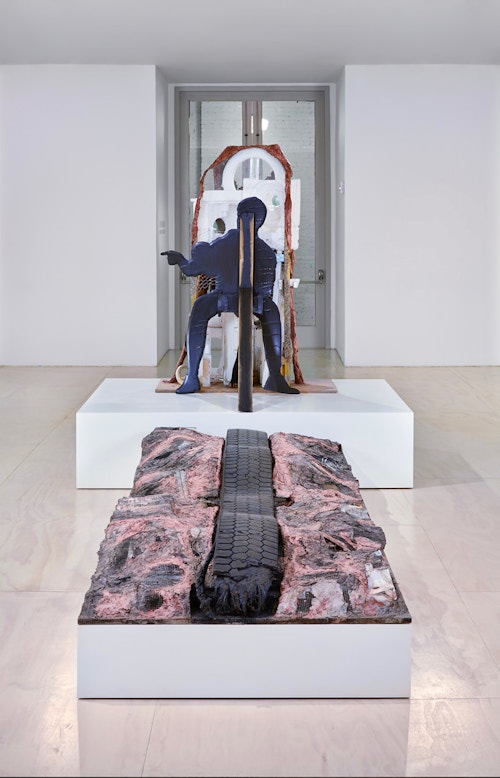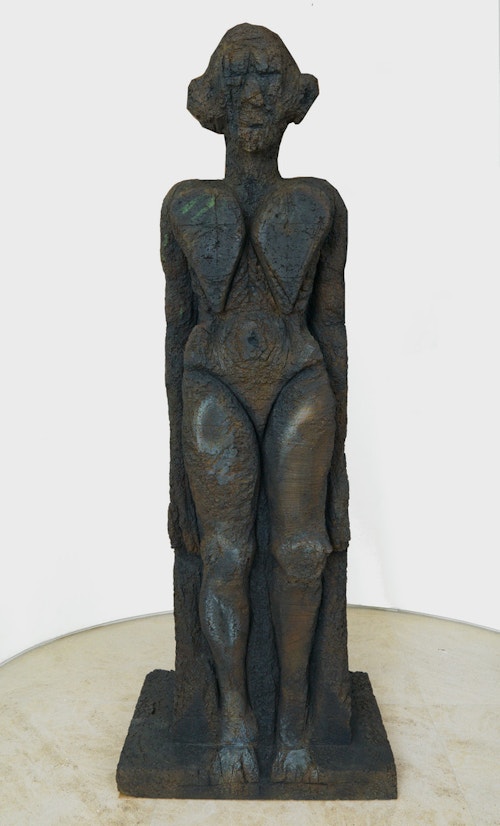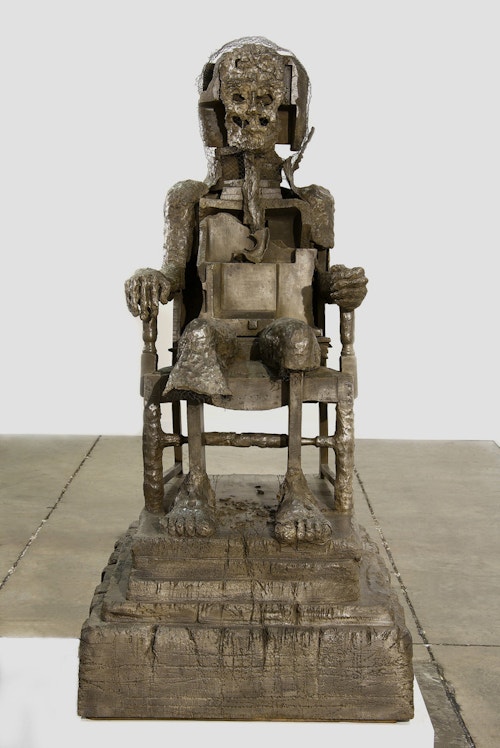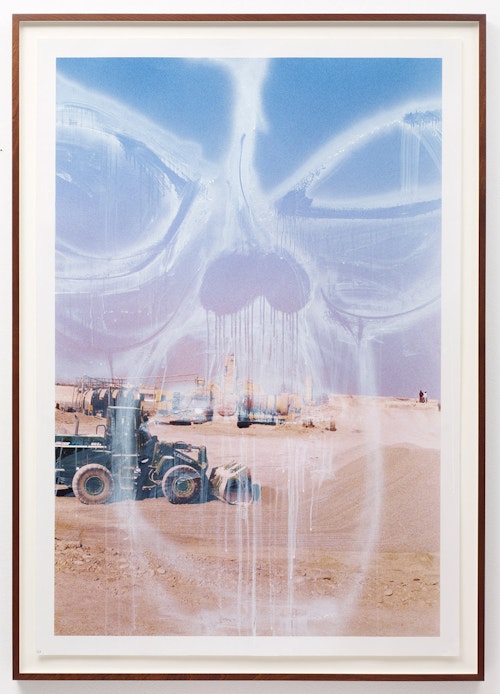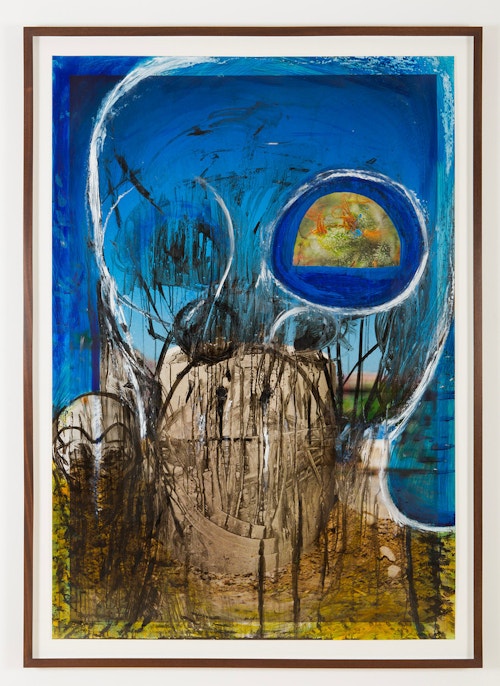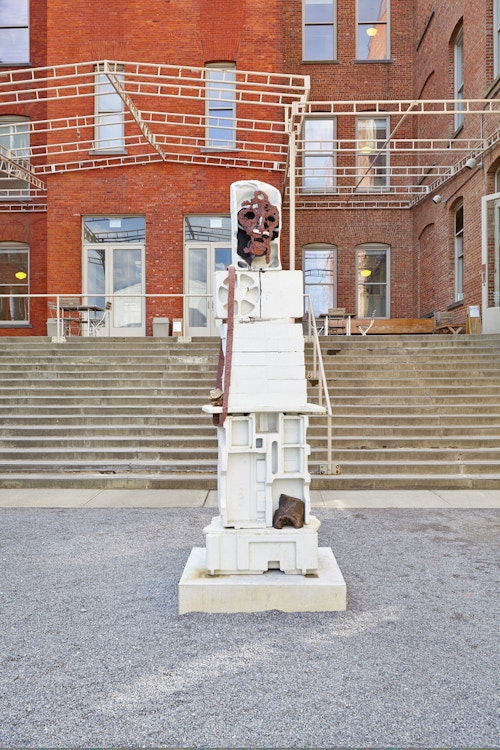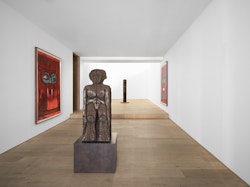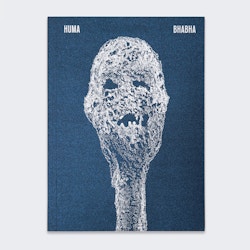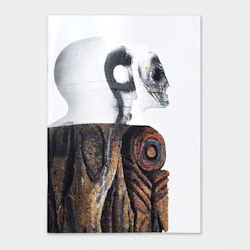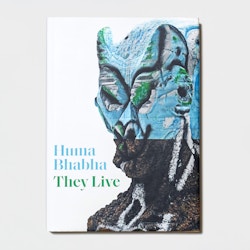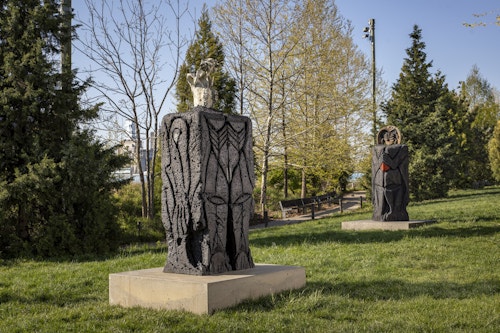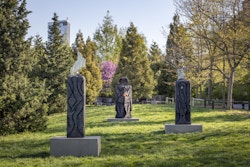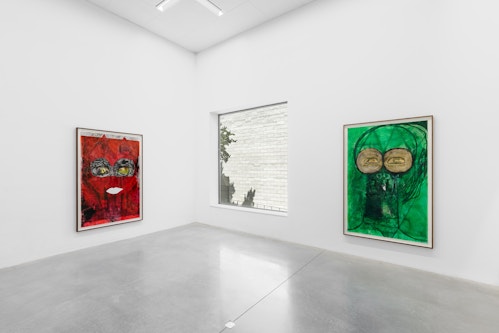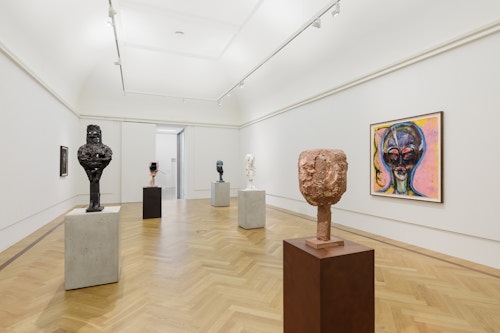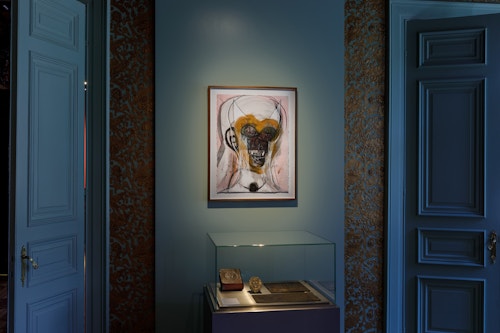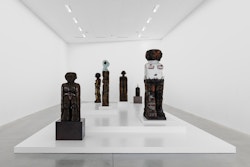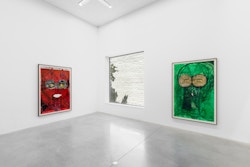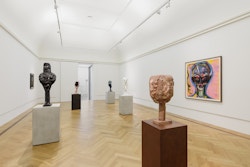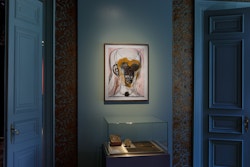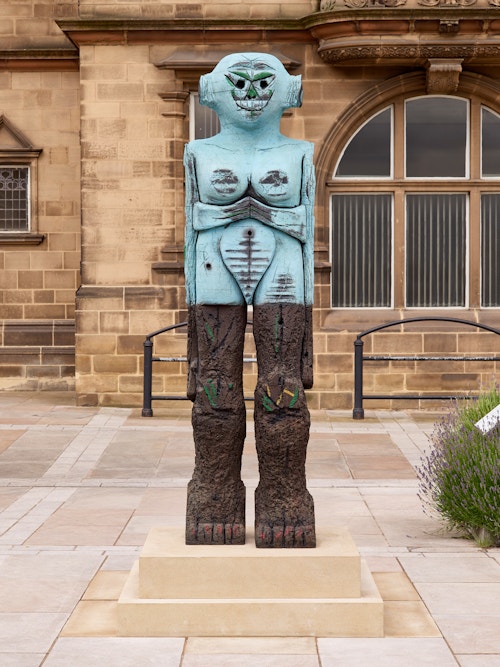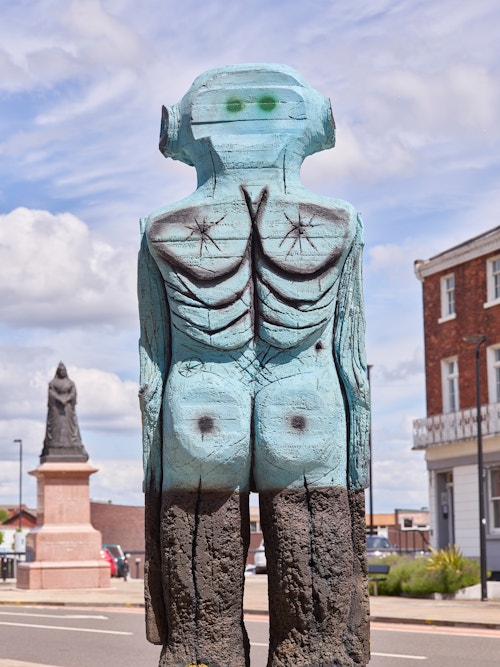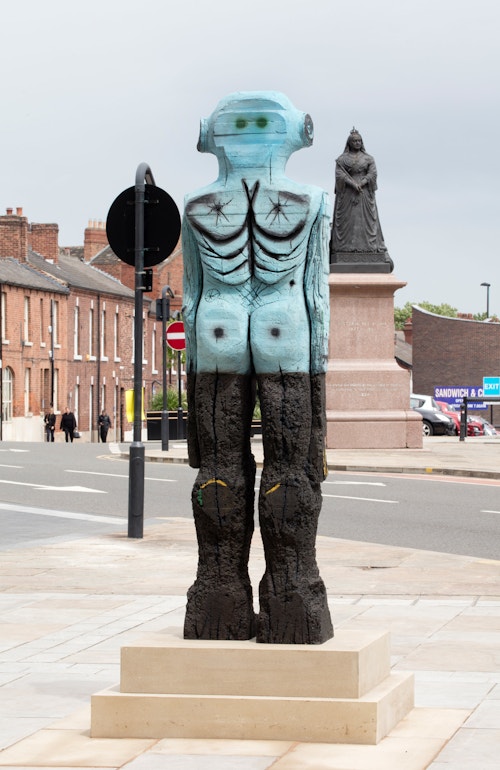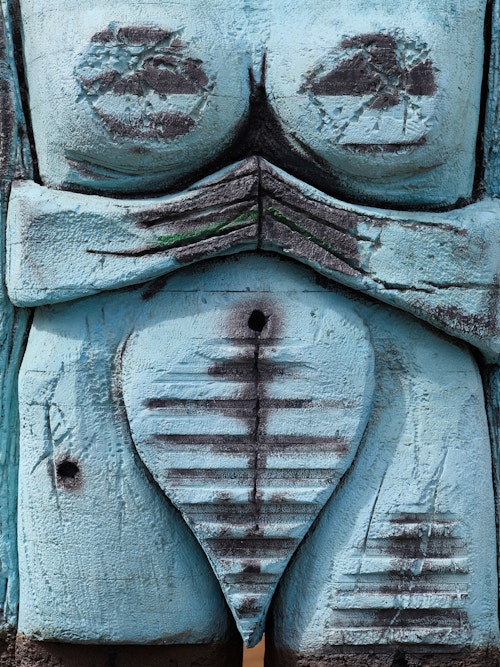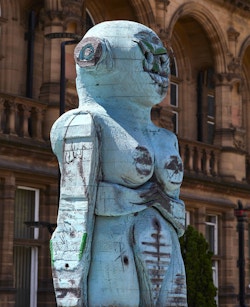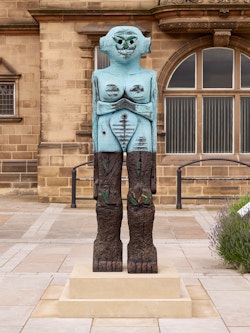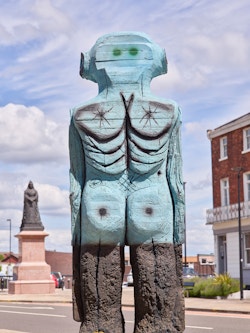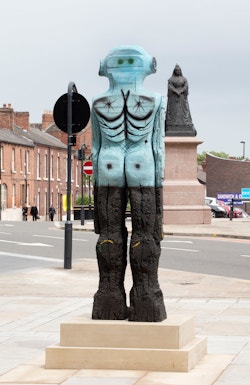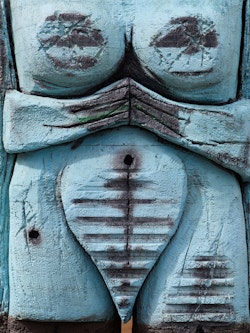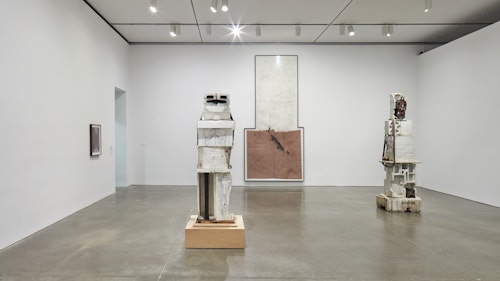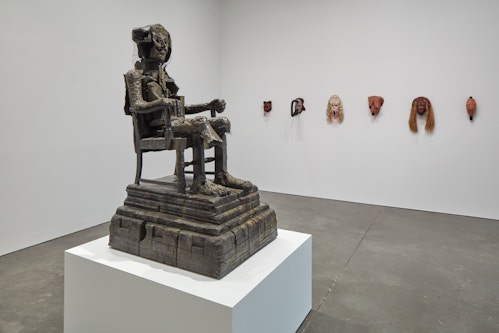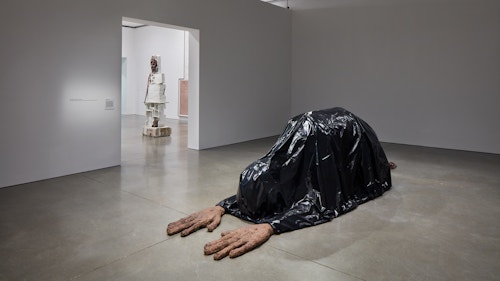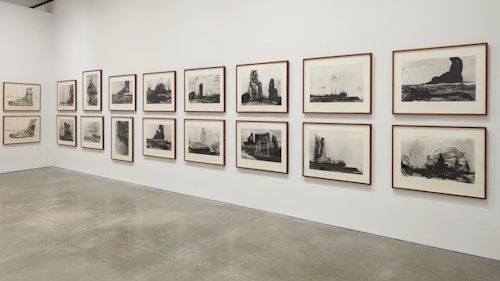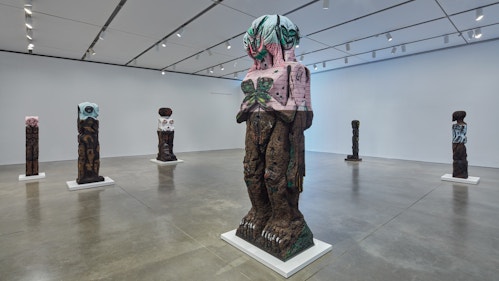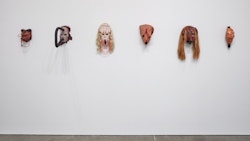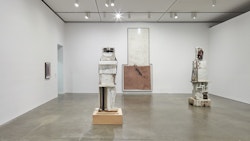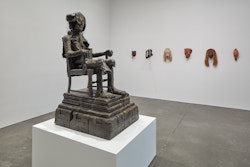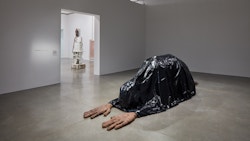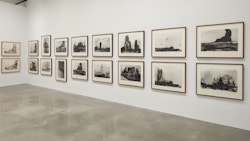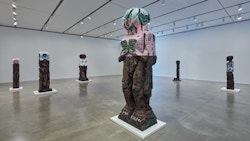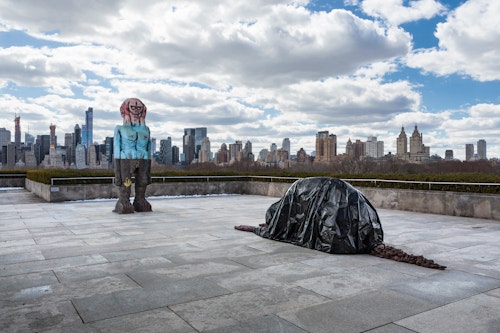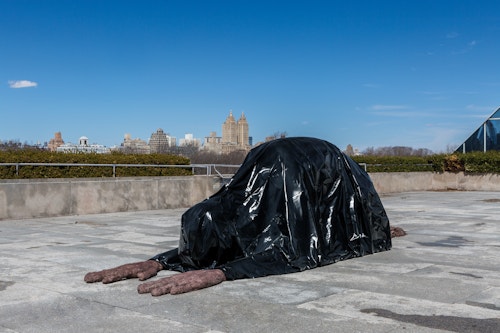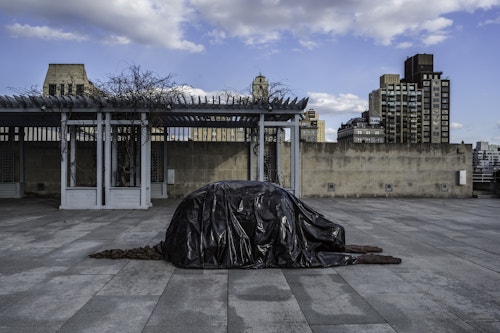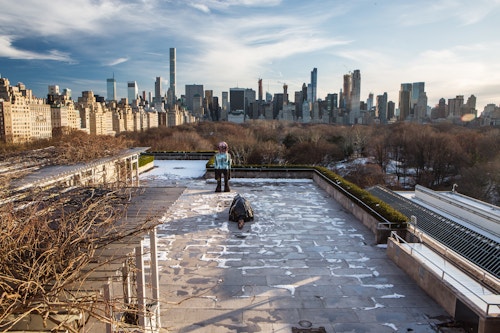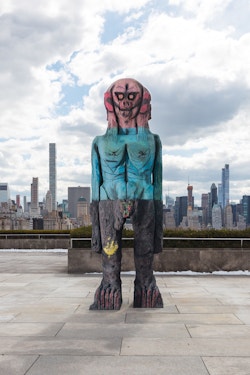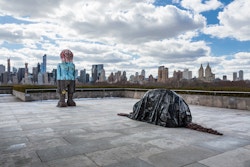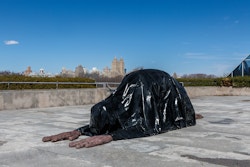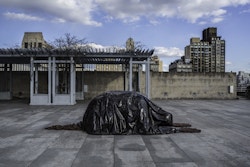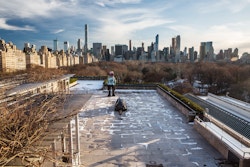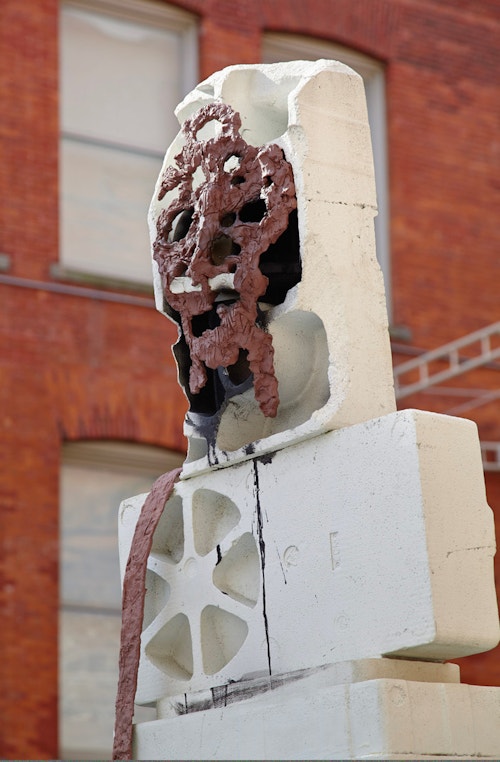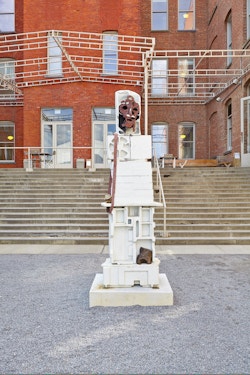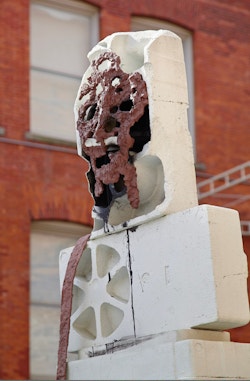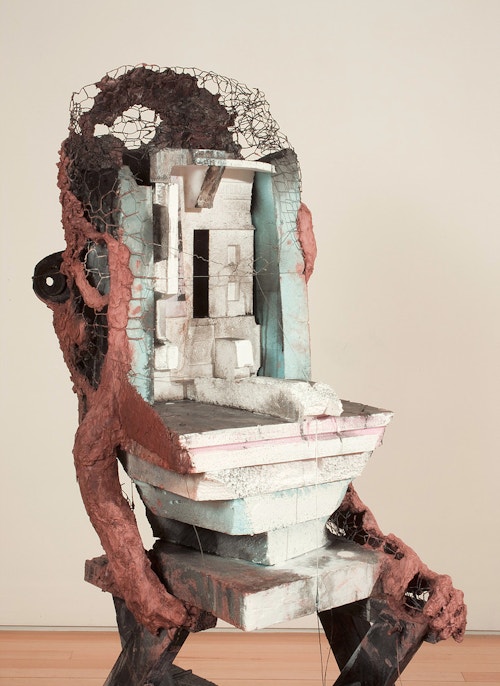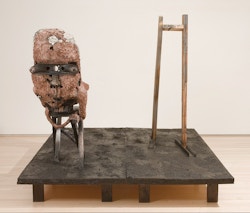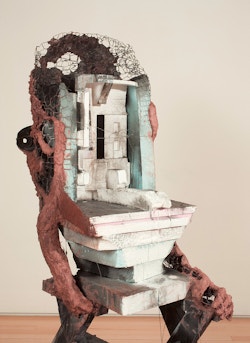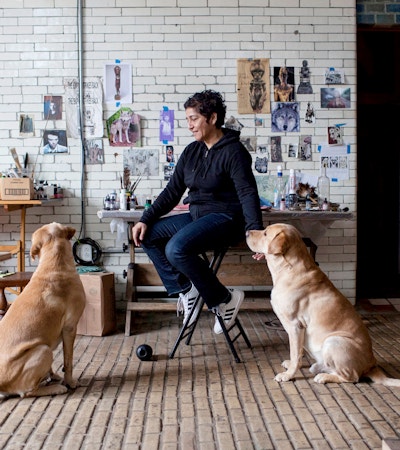
Huma Bhabha
Huma Bhabha is primarily known for her figurative and often monumental sculptures in striking combinations of materials. Using salvaged objects such as fragments of furniture and industrial polystyrene boxes, and a wide range of media including clay, wood, cork, paper, plastic, rubber and metal, Bhabha creates sculptures that hover between the recognisably human and the otherworldly. Important to her practice, Bhabha also makes drawings on photographs and on paper, working with collage. Employing a distinctly personal visual language, she explores the human figure—an enduring presence in the art of all cultures and periods. Inspired by diverse cultural, literary and art-historical sources, her work conjures up a wealth of references: static and totemic, it alludes to the ancient Greek kouro or early African, Egyptian and Indian sculptures; charged and gestural, it evokes the language of modernism, expressionism and other more recent artistic developments. Sci-fi, horror movies, current events, popular novels and memories of Karachi also permeate her narratives. Resonant and multi-layered, her work transcends time and place to constitute an exploration of eternal themes such as war, colonialism and displacement.
Huma Bhabha (b. 1962, Karachi, Pakistan) moved from Karachi to the United States in 1981 to pursue her studies at the Rhode Island School of Design in 1985, and then Columbia University, where she completed her MFA in 1989. She garnered international acclaim in 2018 for We Come in Peace, two colossal bronze figures that she installed in the Metropolitan Museum of Art’s roof garden. The artist’s work has been exhibited extensively, including at Brooklyn Bridge Park (2024); M Leuven (2023) which travelled to MO.CO, Montpellier (2024); the Sydney Biennale (2020); ICA Boston (2019); the Venice Biennale (2015); MoMA PS1 (2012); the Whitney Biennial (2010); the Gwangju Biennial (2008). In 2020, BALTIC Centre for Contemporary Art mounted her first major survey in Europe. In 2025, Huma Bhabha will be the subject of a two-person exhibition with Alberto Giacometti at the Barbican Centre, London. Her work can be found in numerous public collections including: The Museum of Modern Art in New York, the Hirshhorn Museum in Washington DC, the Centre Georges Pompidou in Paris, Ekebergpark in Oslo and the Museum of Fine Arts in Houston. Huma Bhabha lives in Poughkeepsie, New York.
